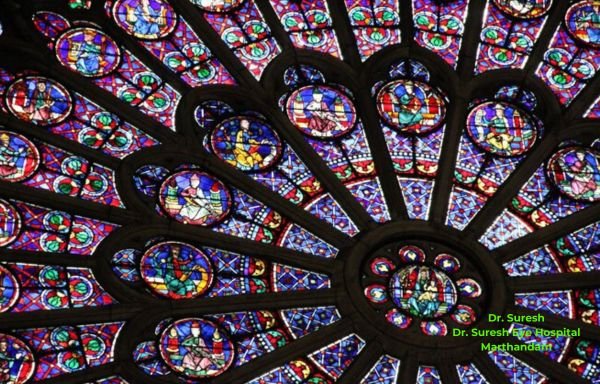Rose windows are large, circular stained-glass windows found in Gothic architecture, symbolizing divine light and eternity. They often depict biblical scenes and saints, acting as a "Bible in glass" for the illiterate. The circular shape represents infinity and divine perfection, while the intricate designs helped distribute the structural weight of cathedrals. Notable examples include those in Sainte-Chapelle and York Minster. These windows continue to inspire both traditional and modern religious architecture.
Radiance of Faith: The Rose Windows of Marthandam C.S.I. Church"
Rose windows
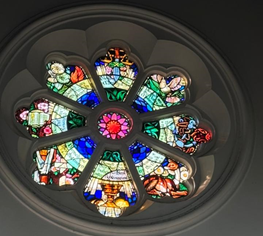
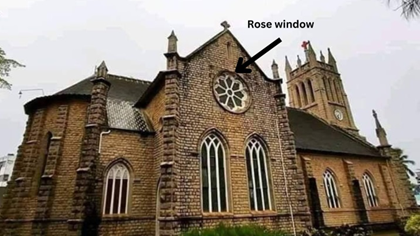
Rose windows are large, circular stained-glass windows that are a hallmark of Gothic architecture, particularly prominent in cathedrals across Northern France. They are celebrated for their intricate designs and vibrant colors, which not only enhance the aesthetic appeal of the structure but also serve symbolic and functional purposes.
Historical Development
While circular windows existed in earlier architectural styles, it was during the Gothic period, starting in the mid-12th century, that rose windows became a defining feature. Advancements in engineering, such as the development of flying buttresses, allowed for larger window openings, facilitating the creation of these expansive and elaborate designs.
Design and Symbolism
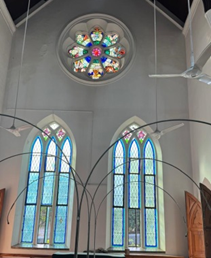
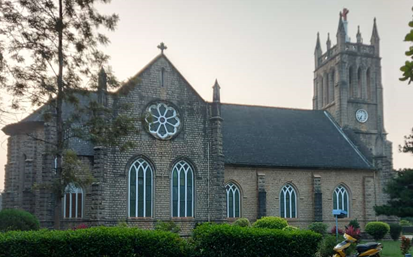
The intricate tracery and vibrant stained glass of rose windows often depict biblical narratives, saints, or symbolic motifs. The circular form is thought to represent the infinite nature of God, and the radiating patterns can symbolize the spread of divine light or the harmony of creation.
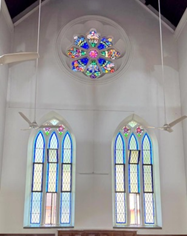
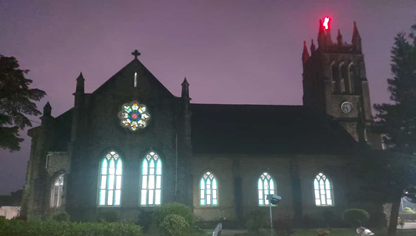
One of the rose windows in Marthandam C.S.I. Church is particularly special. This stained-glass window, beautifully designed, includes the Bible verses from Matthew 5:3-10, often known as the Beatitudes. It also depicts God's creation, filled with vibrant images of planets, fish, birds, animals, and underwater creatures, reflecting the wonder of God's handiwork in the natural world.
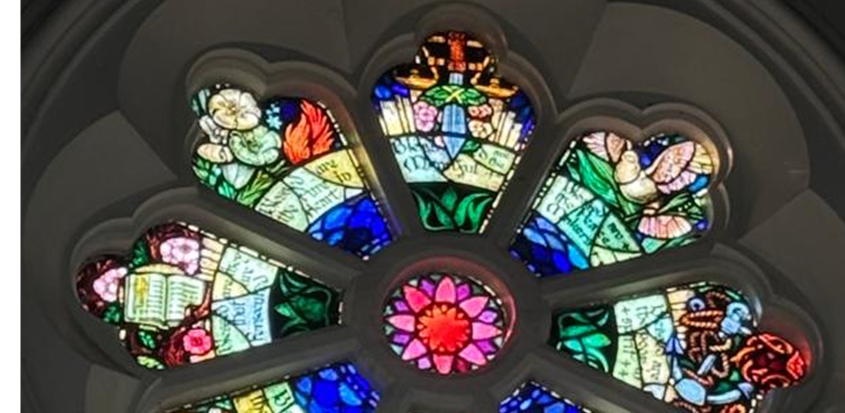
The stained glass windows for Marthandam C.S.I. Church were made in Glasgow, Scotland. The windows were provided by the husband of Rev. Robert Sinclair's sister, Jessie Rose, in her memory. Rev. Robert Sinclair, who played a key role in the construction of the church, oversaw the installation of these beautiful windows. In 1980 and 1981,his son Dr. John Sinclair and his wife had the joyful experience of visiting Martandam and seeing the windows in place, a testament to the enduring legacy of Jessie Rose and her husband's thoughtful gift.
The design of these windows invites the viewer to reflect on the beauty and diversity of creation, serving as a reminder of God's power and creativity.
The verses are,
Blessed are the merciful
Blessed are the peacemakers
Blessed are the poor in spirit
Blessed are the meek
Blessed are they which do hunger and thirst after righteousness
Blessed are they that mourn
Blessed are they which are persecuted for righteousness' sake
Blessed are the pure in heart
Matthew 5; 3-10
Additional Information About Rose Windows:
Architectural Significance:
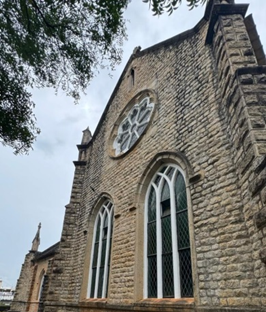
Rose windows are not only decorative but also function as structural elements in Gothic architecture. The circular shape of the rose window helps distribute the weight of the building, especially in cathedrals with tall, expansive walls and vaulted ceilings. This was made possible by the development of flying buttresses, which supported the walls, allowing for larger windows.
Symbolism of the Circle:
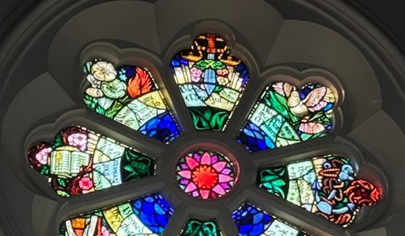
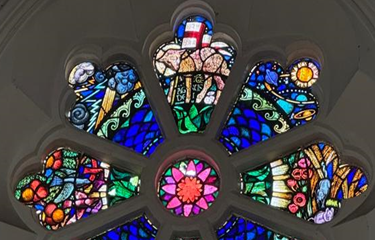
The circular form of rose windows is rich with symbolic meaning. The circle itself represents eternity, with no beginning or end, symbolizing the infinite nature of God. It is also associated with the idea of the heavenly Jerusalem, the eternal city described in the Bible. Additionally, the shape of the window is meant to evoke the idea of divine order and perfection.
3. Theological Importance:
Rose windows were often used to tell stories from the Bible in a visually captivating manner, acting as a “Bible in glass” for those who could not read. They depicted scenes such as the Last Judgment, the life of Christ, the Virgin Mary, and various saints, helping to convey the teachings of the Church to the faithful. The windows often framed the light in a way that conveyed a sense of divine presence, as the sunlight streaming through the glass symbolized the presence of God’s spirit.
- Technological Innovation in Stained Glass:
The development of rose windows also spurred advancements in the art of stained glass. The intricate patterns and vivid colors in rose windows were achieved by skilled craftsmen who used glass made from various minerals to create a palette of colors. Some rose windows feature complex designs, with multiple sections and interconnected glass pieces. The use of lead to hold the glass pieces in place formed the famous “cames” lines, which enhance the beauty of the designs.
5. Famous Rose Windows in the World:
Sainte-Chapelle, Paris: Known for its extensive use of stained glass, Sainte-Chapelle has stunning rose windows that beautifully capture biblical stories, particularly in its upper chapel.
York Minster, England: The rose window here, often referred to as the “Great Rose Window,” is one of the largest and most intricate of its kind, featuring biblical themes and vibrant colors.
Rheims Cathedral, France: This cathedral is famous for its rose windows, which depict scenes from the life of Christ, and its 13th-century designs are admired for their harmony and detail.
6. Revival and Influence:
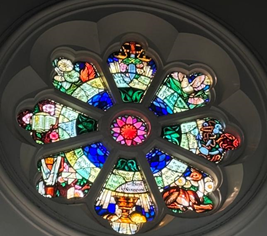
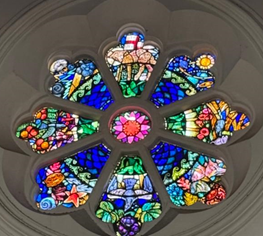
After the Gothic period, rose windows fell out of fashion but saw a revival during the 19th and 20th centuries, especially during the Gothic Revival movement. Architects and artists, inspired by the beauty and craftsmanship of medieval rose windows, began creating new versions for churches built during this period. These modern windows often incorporated both traditional and new materials, merging Gothic design with contemporary techniques.
7. Modern Interpretations:
While traditional rose windows are most often associated wi
th cathedrals, many modern churches and religious buildings have adopted the rose window design to reflect both traditional and contemporary religious themes. Some modern rose windows feature abstract designs or include symbols that reflect the values of modern Christianity, such as peace, unity, and hope.
Conclusion
The rose windows of Marthandam C.S.I. Church are a beautiful blend of faith, art, and history. Crafted in Glasgow, Scotland, and dedicated to Jessie Rose, they depict the Beatitudes and God's creation. These stained-glass windows, reflecting divine light and symbolism, enhance the church's aesthetic while conveying spiritual messages. Their intricate design and historical significance highlight the timeless legacy of faith, making them an enduring symbol of divine beauty and grace for future generations.
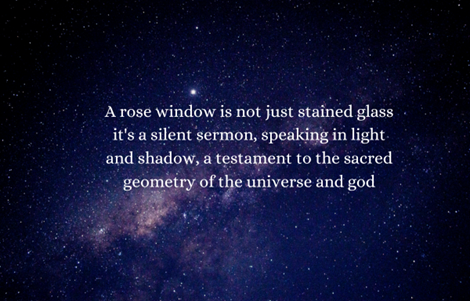
Click here for : Tamil eye related Blogs: https://tamilsuresh.com/
Click here for : English eye related Blogs : https://www.suresheyehospital.in/


